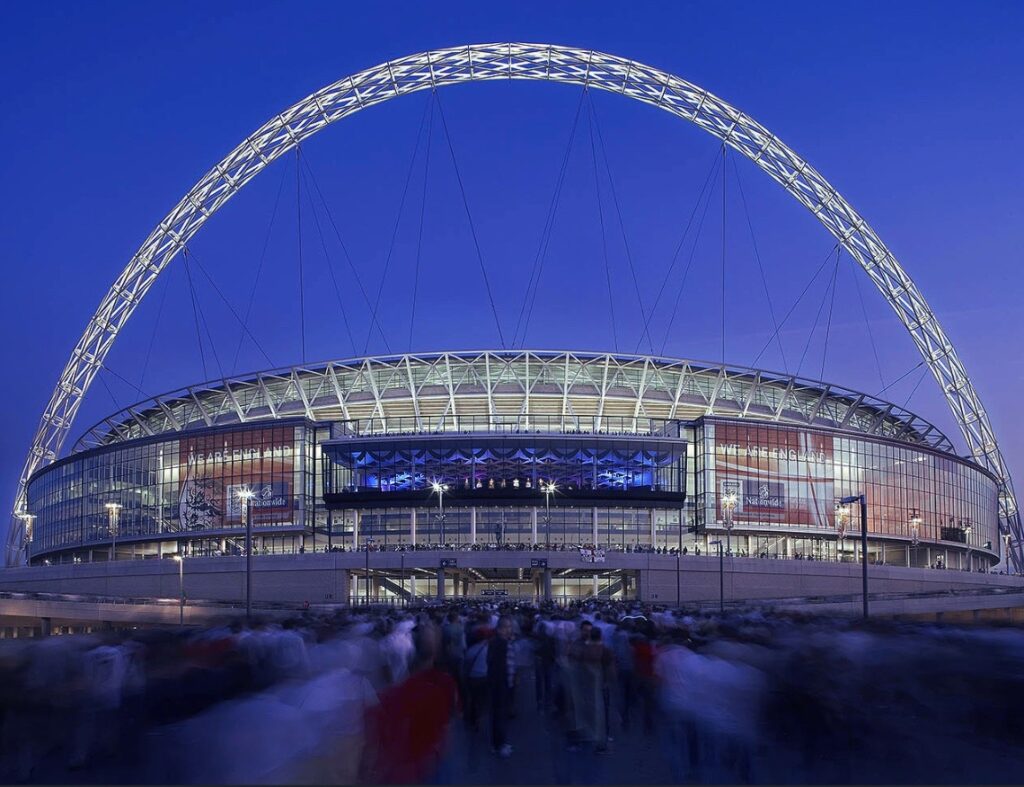© The Fan Experience Company 2023

The Fan's Journey - Part 1: Introduction - A model for measuring and improving the fan experience
The Fan Experience is something many sports clubs have considered and have attempted to improve over the last decade.
Yet, it is easier said than done.
Where do you start? Our recommendation is to map out the fan’s journey on event / game days. The Fan Journey has a sequence of touch points where the service provider (sports club) has the opportunity to meet or exceed the fan’s expectations. Where mapping the Fan Journey leads to improved experiences across the touch points, fans feel more valued and are more inclined to remain loyal attendees while also advocating the sports club / event to those in their network.
Why does it work? It is simply because identifying the key touch points that a supporter experiences on game day gives a sports club or event owner the opportunity to experience the journey from a fan’s perspective. It can help them to understand the impact of the experience on the fan’s emotions too.
The overall aim is to identify and improve the key areas that the club can control, or influence, alongside other partners who may have an impact on the fan’s journey (such as local transport companies, for example).
This is why we have created a Fan Journey model based on our experience in local and international sporting events. We have created this model so sports organisations can map out the key touch points, sample the experience of a fan, seek to measure or grade that experience and provide possible solutions to strengthen the journey.

Mark Bradley
@fanexperienceco
Mark founded the Fan Experience Company in 2005 to build attendance growth and community engagement on the basis of improving fan experiences. He recently created FC Barcelona’s Barça Innovation Hub’s first fan engagement study certificate. The Fan Experience Company has undertaken more than 3,500 fan experience assessments in many countries for clients as diverse as The Danish Superliga, The EFL, The WSL / WC, United Rugby and Premiership Rugby.

Geoff Wilson
@fanexperienceco
Geoff runs his own Sports Consultancy, working with clients such as FIFA, UEFA, AFC and FIBA across the world. He is also on the board of Tourism Northern Ireland. You can follow Geoff on twitter @geoffwnjwilson connect on Linkedin at linkedin.com/in/geoffwnjwilson

Darren Young
@fanexperienceco
Darren joined the Fan Experience Company in 2017. He has an MBA with a background in customer service excellence having worked as a consultant in that field for a number of years. As well as being responsible for all of the assessment summary reports that are produced each season, he has also worked with a number of clubs on an individual basis, including Lincoln City, Walsall, Grimsby Town, Nottingham Forest and OH Leuven on projects ranging from staff development to supporter feedback surveys.
Why do it?
Well, providing enhanced or amazing experiences will help to drive fans back to your event. There is little point spending money and effort on getting fans to the game if they don’t have a good time when they are there. We cannot solely rely on the team winning to grow attendances.
However, we can control what happens off the pitch and we know that the overall experience of a fan has a huge bearing on whether they will come back again (and how favourably they will talk about it with others). Sports organisations should embrace the Fan Journey model to help them improve their overall fan experience not just on game / event days but throughout every step of the experience: from booking tickets and travel planning to leaving the stadium and heading home.

THE FANS JOURNEY MODEL
The model covers 11 touch points covering – where possible – the journey in chronological order. These touch points are as follows:
Before The Game
This typically takes place in the weeks / days before the game when a fan will look for information about the game across (mostly) digital platforms. This touchpoint is more relevant to new fans, or casual ones, who are not as familiar with the club or stadium and need more details in order to plan their visit. The existence of a guide / first time fan page is evidence of a club that understands how vital this is.
Buying A Ticket
This is the process of finding and purchasing a ticket for the game. This might be using the club website, a third party ticket site or by contacting the club by (usually by telephone although it is possible to use social media and other digital channels). This part of the model looks at accessibility, price and the wider communication opportunities that exist when the club is given contact data.
Digital Communications
These represent another touchpoint that covers a wider period of time and will typically cover emails and social media content. Emails (during the ticketing stage) can provide important information, while social channels can be viewed in the build-up to games, where information about the game – and promotion of what is at the venue – can be effectively provided. The way the club communicates and engages with fans before, during and after the game are all key parts of this touchpoint.
Heading To The Game
As well as the travel information provided online, and across social channels, this touchpoint focuses on making the last mile of that journey on a game day easier and more convenient. Are there parking options recommended? Are they close and secure? Is there signage to help fans find the stadium and other destinations such as fan zones and retail and refreshment outlets? Are all forms of transport covered, including walking distances and cycle routes?
Outside The Stadium
This touchpoint looks at the area in the immediate vicinity of the stadium. Depending on where there are situated, some venues will have much more available space than others but it is what a club does with the space that is more important. This is the area where fan zones and activities can be used effectively to entertain fans on arrival, giving them a reason to get there earlier and to make more of their day. And when it’s time to go inside, how easy is it and are fans made to feel welcome?
Buying Merchandise
Although the majority of clubs will have an online store, this touchpoint focuses primarily on the physical outlets at the stadium. This might be one main store outside the stadium or multiple outlets situated internally and externally. The range, quality and price are all crucial factors here but it’s also important to find ways to engage with fans (i.e. player appearances) too. What is it that makes these elements must-visit destinations?
Food And Drink
This is a complex touchpoint as food and beverages are provided in many ways at venues. The traditional refreshments outlet is a kiosk in the concourse but, of course, they might be in the fan zone, or in bars and cafes inside or outside the stadium. The range, price, availability and quality are all key factors but they are not the only ones as a club might also offer healthy options or items that are unique to their local community. They can also make it convenient for fans with specific needs, for example, by offering special service lines for families with young children or lowered counters for wheelchair users.
Inside The Stadium
If a fan is inside the stadium, the club needs to make the experience about much more than the action on the field of play. Extending the experience, with pre-game entertainment (on the pitch / concourses) and effective use of the PA system, music, big screens and entertainers will mean that while the result and performance of the team are still key, that is only one part of a greater experience. What are the physical parts of the experience like? These are increasingly important factors for new fans (who have higher expectations) so the club has to get these parts of the experience right if it wishes to retain them.
During The Game
What are the physical parts of the experience like? This touchpoint also examines everything from the stands (Can you find your seats easily? Is your view of the field of play good? Are the seats comfortable?) to the quality of ancillary services like toilets. When the game is underway, there are still ways in which the club can connect and engage with fans. As well as social media, there may also be a big screen where images can be shared and promotional messages may be posted. Half-time is also a great opportunity to engage with fans so having a form of entertainment on the pitch will be key. For the younger fans, an accessible mascot with an engaging routine can ensure that an invitation to attend again will be met with a big smile, rather than a shrug.
Heading Home
It’s easy to forget but just because the game is over, it doesn’t mean that opportunities to engage with fans are over too. Saying farewell to fans, and thanking them for their support, are two ways in which this can be done. What about reminding them of upcoming fixtures too? Or simply providing guidance for those looking for a quick exit to the car parks / exits or perhaps to any post-game entertainment (which will increase stadium dwell time and encourage further secondary spend).
After The Game
In the days after a game, there are still ways to engage with fans. It’s the perfect time to remind them of the next game and even to provide a link to the appropriate game on the ticketing site. But it should not only be about getting them to another game. If we are to learn from their experiences then their feedback is crucial. A club should take every opportunity to find out what the fans, especially new ones, think.
How to use the model
The model makes it clear that the Fan Journey encompasses many touch points. These could also be described as ‘moments of truth’ as they are the times when the club can really improve their relationship with a fan (or, if not managed well, damage it irreparably). The most important thing to note is that these touchpoints fit together to create an overall journey. Fans do not like inconsistency, where some parts of the experience are very good while others are bad, so understanding what the journey is like, from beginning to end, is a key part of the improvement process for a club. If the club’s employees don’t know what it is like to be a fan at the club, then how can they make the experience better?
So how do you optimise the model to improve the experience, add value and, ultimately, impact positively on fan recruitment and retention?
- First of all, review the Fan Journey Model touch points (to ensure they are all relevant to your particular venue, sport and game day).
- The next step is to ‘take a walk in fan’s shoes’ by undertaking an assessment of each of the touch points indicated by the Fan Journey Model. This is best done by simply walking the experience on a game day.
- Score each Touch Point on a 0-10 basis (where 0 is worst and 10 is best) and then make a plan to improve the experience at the appropriate Touch Points.
We are looking to create a differentiated experience that adds fan value throughout. You can measure levels of value by regularly undertaking post-game surveys. These interventions should elicit scores and comments across the entirety of the Fan Journey, as well as overall scores that will help you to anticipate and influence future fan behaviour.
Our experience shows that, when it comes to the Fan Journey, your people are your greatest asset. For example, when something goes wrong at an individual Touch Point, a highly motivated and pro-actively engaging club representative can not only rescue the situation but also add extra value through their personal intervention.
Finally, the Fan Journey Model can help you to grow match day revenues sustainably. This is not only achieved by optimising the experience at ‘secondary spend’ Touch Points such as Outside the Venue, Buying Merchandise and Food and Drink but also through the positive impact on retention and new fan acquisition that increasing fan advocacy will deliver.
Mark Bradley, co-author of the Fan Journey model said, “It is fascinating and revealing exercise to scope out the key touch points in the Fan Journey and then grade them in terms of their positive or negative impact on the overall experience. We believe it has never been more important to ensure the experiences clubs or events offer provide the highest possible levels of value for the fan”.
Geoff Wilson, co-author of the model said, “developing a model provides our industry with something to follow and to adapt to their specific needs. The fan experience can cover many areas, from quality food and beverage to welcoming staff, to clean and tidy venues, to engaging and relevant entertainment and much more. All of the touch points must be continually revisited and improved by progressive sports organisation”.
Darren Young, co-author continued, “We have been fortunate to work with major sports brands and we have used the knowledge accumulated to create this model. We are keen to see other sports organisations adopt the model with the overall aim of improving the fans experience and unlocking all of the tangible and intangible benefits this offers”.
Mark Bradley, Geoff Wilson and Darren Young assessed the fan experience at eight matches at the 2022 World Cup in Qatar. Click here to read more about what they found there.
